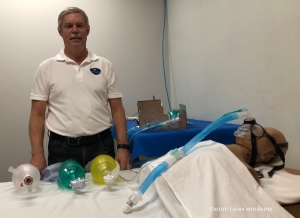May 19, 2020
The U.S. Small Business Administration (SBA) recently released the loan forgiveness application which Paycheck Protection Program (PPP) borrowers will use to determine and report to their lender how much of their PPP loan is eligible for forgiveness. While most PPP borrowers have a top-line understanding of the program, the application provides new information, and attempts to resolve some outstanding questions that many borrowers had concerning forgiveness. The most noteworthy provisions of the application are below:
Alternative Payroll Covered Period
In order to accommodate PPP borrowers with a bi-weekly (or more frequent) payroll, borrowers now have the option on the application to calculate eligible payroll costs using the eight-week (56-day) period that begins on the first day of their first pay period following their PPP Loan Disbursement Date (the “Alternative Payroll Covered Period”). For example, if the borrower received its PPP loan proceeds on Monday, April 20, and the first day of its first pay period following its PPP loan disbursement is Sunday, April 26, the first day of the Alternative Payroll Covered Period is April 26, and the last day of the Alternative Payroll Covered Period is Saturday, June 20—56 days from April 26.
This comes as a relief to many PPP borrowers, as the language of the CARES Act and the subsequent rules and regulations issued by the SBA made it appear as though payroll costs would only be eligible for forgiveness if the expenses were “paid and incurred” during the eight-week period that started the day of the first disbursement of the PPP loan (the “Covered Period”). For certain borrowers, this would have been an accounting nightmare, as their payroll schedule did not coincide with when their business received PPP funding. Borrowers now have the option to use the Alternative Payroll Covered Period for a borrower’s payroll costs, employee health insurance, retirement plan contributions, and state and local taxes assessed on employee compensation calculations if the period would better coincide with their business’s payroll schedule. Borrowers must use the Covered Period when calculating their eligible nonpayroll costs (as defined below).
Summary of Costs Eligible for Forgiveness
Eligible Payroll Costs
The application allows a PPP borrower to deduct payroll costs that were either “paid” or “incurred” during the borrower’s Covered Period (or Alternative Payroll Covered Period). Per the application, payroll costs are considered paid on the day that paychecks are distributed or when the borrower originates an ACH credit transaction. Payroll costs are considered incurred on the day that the employee earned the pay. Payroll costs incurred but not paid during the borrowers last pay period of the Covered Period (or Alternative Payroll Covered Period) are eligible for forgiveness if paid on or before the borrower’s next regular payroll date. Otherwise, payroll costs must be paid during the Covered Period (or Alternative Payroll Covered Period).
The guidance also outlines that for each individual employee, the total amount of cash compensation eligible for forgiveness may not exceed an annual salary of $100,000, as prorated for the covered period. This means that no employee is entitled to earn more than $15,385 in cash compensation during the borrowers’ Covered Period of Alternative Payroll Covered Period. This $15,385 cap in cash compensation also applies to any owner-employees, self-employed individuals, or general partners of the business.
Eligible Non-Payroll Costs
Per the application, the following nonpayroll costs are eligible for forgiveness:
(a) covered mortgage obligations: payments of interest (not including any prepayment or payment of principal) on any business mortgage obligation on real or personal property incurred before February 15, 2020 (“business mortgage interest payments”)
(b) covered rent obligations: business rent or lease payments pursuant to lease agreements for real or personal property in force before February 15, 2020 (“business rent or lease payments”)
(c) covered utility payments: business payments for a service for the distribution of electricity, gas, water, transportation, telephone, or internet access for which service began before February 15, 2020 (“business utility payments”)
An eligible nonpayroll cost must be paid or incurred during the Covered Period and paid on or before the next regular billing date. This is true even if the billing date is after the Covered Period. Eligible nonpayroll costs cannot exceed 25% of the total forgiveness amount. Allowing this distinction of costs being paid or incurred during the Covered Period allows some flexibility for borrowers to use their PPP funding.
Forgiveness Limitations
Average Full-Time Equivalent (FTE) Calculation
The loan amount eligible for forgiveness may change depending on whether the borrower’s average weekly number of FTE employees during the Covered Period or the Alternative Payroll Covered Period was less than during the borrower’s chosen reference period. Many borrowers have expressed concern over what constitutes the calculation of a “full-time equivalent” employee. The application provides a calculation method to determine the average FTE in either the Covered Period or the Alternative Payroll Covered Period. For each employee, the borrower shall enter the average number of hours paid per week, divide by 40, and round the total to the nearest tenth. The maximum for each employee is capped at 1.0. Borrowers can use a simplified method, where the borrower can use 1.0 for employees who work 40 hours or more per week and 0.5 for employees who work fewer hours.
There are a few exceptions in the FTE calculation listed on the application. The application asks the borrower to indicate whether there any positions for which the borrower made a good-faith, written offer to rehire an employee during the Covered Period or the Alternative Payroll Covered Period which was rejected by the employee. It also asks if there were any employees who during the Covered Period or the Alternative Payroll Covered Period were either fired for cause, voluntarily resigned, or voluntarily requested and received a reduction of their hours. In all of these situations, if the position was not then filled by a new employee, the borrower can include these cases as FTE in their calculation.
Salary/Hourly Wage Reduction
The CARES Act specifically states that a borrower’s loan forgiveness amount will be reduced if the borrower reduced the salary/hourly wages of eligible employees by more than 25%. The application has a Salary/Hour Wage Reduction column for borrowers to complete for employees whose salaries or hourly wages were reduced by more than 25% during the Covered Period or the Alternative Payroll Covered Period as compared to the period of January 1, 2020 through March 31, 2020. The column outlines a three-step process that borrowers will have to go through to analyze whether they are susceptible to loan forgiveness reduction.
Borrowers Who Received More Than $2 Million in PPP Funding
Borrowers who, along with their affiliates, received more than $2 million in PPP funding will have to check a box on the application stating that they received more than $2 million. As prior SBA and Treasury guidance has stated, any borrower who received more than $2 million will face audits. This box within the application will help the SBA flag PPP loans that are eligible for audit.
Conclusion
This program has rapidly evolved since its inception mere months ago, and new guidance was released multiple times. It is anticipated that the SBA will soon issue a new interim final rule (IFR) to supplement the application, which will provide additional information and guidance for borrowers on how to apply for and calculate forgiveness applications. While this could be stressful for many businesses, Walter | Haverfield is closely monitoring the guidance concerning this program and is prepared to assist businesses navigate these important, yet complex issues. If you have additional questions, please reach out to us here. We are happy to help.


